An interview with Tom Miano
How things look in the Toy Market often depends upon who you ask; their chosen areas of expertise; the market with regard to their age, income, childhood and adulthood experiences; and what has recently flooded the market and what has not. Tom Miano, recently named director of Potter & Potter Auctions’ newly created Toys/Pop Culture department, brings both experience and insight to this new position from his years as owner of Serious Toyz™ and years as an advertising executive at some of the top Madison Avenue advertising agencies. Tom’s ability to weigh and measure market indicators with a long-term dedication to the world of toys and pop culture (his enthusiasm is contagious) made him a natural choice for Potter & Potter. We had an opportunity to speak with Tom as he prepares for his first auction with Potter & Potter to find out what’s hot at market in this collectibles space.
I began my working life driving and riding in an ambulance in Brooklyn in the 1970s … (yeah I said it!) and went to the School of Visual Arts, and graduated in 1979. I was hired before I graduated by one of the top 5 ad agencies at the time, Foote, Cone & Belding, and things took off from there. I then spent 25+ years in advertising as a Creative Director at places like Ogilvy & Mather, J.Walter Thompson, and McCann Erickson, working on accounts that included General Motors, AT&T, American Express, Coca Cola, and much more. In the early 1990s, I opened my own agency—“Rudnick & Miano”—with 2 partners and our fingers crossed; we grew to 16 employees and billed over $65,000,000 at our peak. About 4 years in, the bottom fell out due to three near-simultaneous, unrelated, account losses. I then moved on to freelancing.
All the while, I was collecting toys and other things that made me smile.
When I first decided to sell a few things to finance my own toy habit, I came up with the Serious Toyz™ name. My background allowed me to put together some slick ads to run in Toy Shop magazine, and things sold. After a few ads, people started approaching me to sell things for them.
Our first auction was a group of cereal premiums I purchased that we knew nothing about, so we decided to try an auction so that the market would determine the values. We gave out our home number, covered the walls of the kitchen with paper, and began to take bids on one phone line (with call waiting). We were happily surprised by the results, including almost $2,000 paid for an extremely rare “Corney Cornelius” wall walker. Of course, we decided that auctioning was AWESOME, and we built the business from there. Eventually, we were named one of the U.S.’s leading vintage toy auction houses, alongside the big boys like Hakes, Bertoia, and others … imagine our surprise!
I have always believed that everyone should get to participate in auctions, so over the years we continued to offer low value, high ‘smiles’ items, and treat them the same way we treated the high dollar stuff: beautiful pictures, detailed descriptions, and respect for the items when shipping.
About a year ago, a long-time customer/consignor approached me to tell me about Potter & Potter; he did the same to them about me. We clicked big-time, and I have happily joined forces with them. It is a large, well-run auction house and I finally felt I found somewhere that shares my values of honesty and integrity. I intend to make Potter & Potter one of the premier places for Toys & Pop Culture collectibles, starting with the first auction I am producing with them on July 27th.
How do you see the current overall auction market for toys?
Toys are just like any commodities market: interest determines the value at the time of sale, but results can vary widely depending on circumstances. This collecting category, more than most, is about smiling. I believe Toys & Pop Culture collectibles always push peoples best “memory buttons,” and so I am certain that the market will continue to grow in new and exciting categories.
Are there specific categories of toys that you feel are particularly strong right now?
There are always some categories that are, and will remain, strong: robots and space toys; vehicles of almost any type – including tin, die-cast, promos, and pressed steel; classic wind-ups and battery-ops; early Star Wars; Japanese toys; comic books are stronger than ever; and I am seeing solid prices for cartoon characters of 50s-80s; early baseball cards and memorabilia; most early Superhero collectibles; collector cards like “Magic” and “Pokemon;” movie, music, sci-fi posters, and classic toys from 1970s-80s.
Every generation, when they get old enough to get a good job, wants to get their stuff back. The 1970s-80s generation is driving interest (and prices) up for He-Man, Transformers, Superfast Matchbox, 3 3/4” GI Joes, Strawberry Shortcake, Flatsies, and lots more. I also believe toy guns are often overlooked and will be much bigger down the road … many were designed to look like and function like real ones; at some point, we are going to look back at them and say “can you believe they gave these to kids to play with?”
Overall, the only things I can link across the board to strong prices is condition, condition, condition. If it is in spectacular shape, you can throw the book away on almost any category. People will go after it even if it isn’t something they normally collect, because of what I call the “OOOH” factor – if you look at it and say “Oooh! That is cool!” All you need is two people who feel the same way about it.
Are there some areas that should be avoided at this time?
Many items that are prized by older collectors, which used to bring extremely strong prices, are dropping in value. Things such as early character collectibles like “The Yellow Kid” or “Mutt & Jeff” are generally unknown to current collectors; even Lionel trains are down significantly because they were not part of many current collector’s childhoods.
Additionally, I find that almost any items that say “collector’s edition” or “limited edition” on it are usually neither. There will be thousands of people who will buy and put it away, unopened, in hopes of a future payoff. The scarcity and value of collectible toys are the highest when something survived accidentally, not intentionally. Even so, I know many collectors who happily snap up these items, and the end result is the same as vintage collectors: happy.
While older toys may have been designed around lifestyle and the social norms of a particular time, tie-ins with products (giveaways, marketing toys), characters (The Lone Ranger or cartoon characters), movies, and even subsets of other games (the many iterations of Monopoly) often play a role in how a collection is formed – and how much collectors pay for certain items. What types of collections do you see being built today?
Smiling is the foundation for any collection. Early on, I ran across a beautiful little Japanese tin Fire Engine in the original box. Even though I had no particular interest in fire engines, I was spellbound by the colors, the little tin man riding on it, the box graphics, and the condition. When I found a different one with equal appeal, I was all over it. My collection grew to over 140 MIB pieces; I ended up selling them to put a down payment on the house we’ve lived in for 22+ years now.
Buy what makes you happy. Most of the big money collections I’ve been able to offer are from people who did not set out to invest. They built theirs because they loved what they were buying. The pay-off wasn’t the goal, but their instincts drove them to acquire amazing things, and that resulted in them hitting some big money stuff along the way.
The key thing to be aware of is the condition of the item, especially for anything past 1980, which was when people started buying two of the same new toys – one to “play” with, and one to keep in the package. Generally, there are far more unopened toys available from this point on, so don’t buy junk (unless, of course, if it makes you smile).
Are there as many “fakes” in this type of collectibles?
Counterfeit and fakes are rampant in rare die-cast toys. With Matchbox cars, the type or color of the wheels can add as much as two zeros (!!) to the value of an ordinary piece. I literally have a team of experts who each independently inspect any rare Matchbox or Hot Wheels I plan to offer because the counterfeits have become so good, they are sometimes “enthusiastically” debated among my experts … even they sometimes have trouble recognizing them. If any questions about it linger, I will not offer it. When buying rare pieces, people should stick to established dealers with a good track record.
What about handling unlicensed products?
These can be their own areas of collecting! I once collected unlicensed Batman items – in the 1960s, all you had to do is put the word “Bat” on almost anything, and use some form of a black bat shape, and it sold. There is an endless array of unlicensed products and cheap knock-offs to collect, and there are many who enjoy collecting this off-beat stuff.
What toy sales at auction have surprised you over the past 10 years?
My biggest surprises were (believe it or not) Hess Trucks. Someone brought in a few that were given to his kids years ago by a neighbor who worked for Hess, and his gut told him to put them away instead of letting them play with them. They turned out to be extremely rare chromed or clear body variations of regular issue Hess, made in tiny quantities exclusively for John Hess and members of his family. I offered 3 of them in an auction, and they sold for a total of over $25,000, with one going for almost $12,000 by itself. I never saw that coming. Just shows you, even with as much experience as I have in this business, I can still be surprised.
Tom Miano will be heading up the July 27 Pop Culture auction at Potter & Potter Auctions, potterauctions.com.

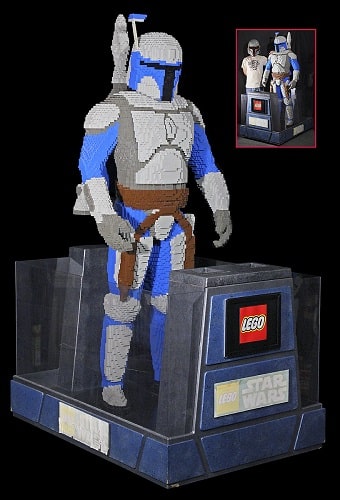
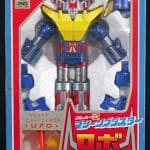



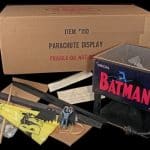
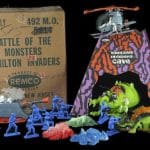
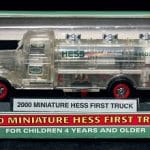




Related posts: